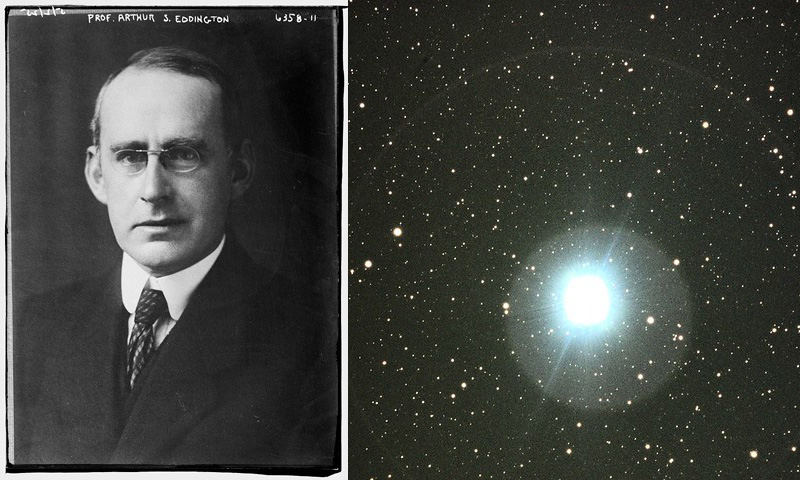
The Eddington Limit
The Eddington Limit (or Luminosity) is a measurement of the the maximum brightness of, say, a star before it starts to blow apart. It can be calculated as
4πGcMmp / σT erg/s
(where G=gravity, c=speed of light, M=mass, mp=mass of a proton and σT=Thomson cross-section), thereby making M (mass) the only or main variable. Indeed, a drastic simplification might approximate to: M to the power 3.5.
The Limit was derived by Sir Arthur Eddington (1882-1944) from Cumbria in 1926. It can be applied to all sorts of celestial objects that are in ‘hydrostatic equilibrium’, i.e. the gravitational pull inwards is balanced by the forces of radiation and gases pushing outwards. The Eddington Limit can be exceeded for a short time, as in an explosion of some sort, but any longer and the outer layers of the object will start to come away in solar winds.
Eddington was a pioneer of astrophysics from a young age and spent most of his career at Cambridge researching, writing and teaching. He was Director of Cambridge Observatory from 1914, having been a Fellow of the Royal Astronomical Society since 1906. His discovery led to a greater understanding of the life cycle of the universe.
(Images LtoR: Prof. Sir A.S. Eddington at garystockbridge617.get.archive.net / Public domain, & the Vega star by CSky65 at Flickr.com / CC BY-NC-ND 2.0)
